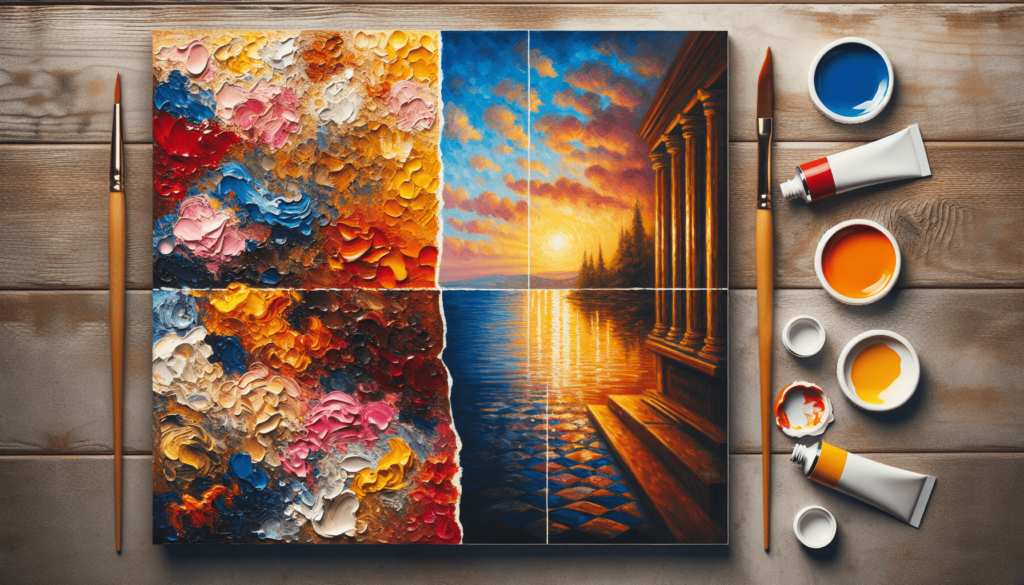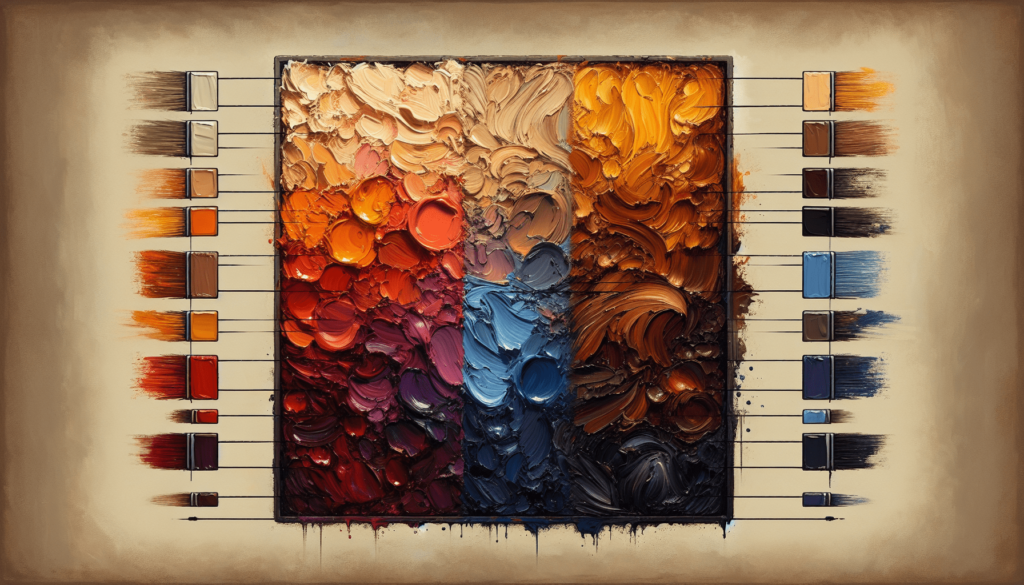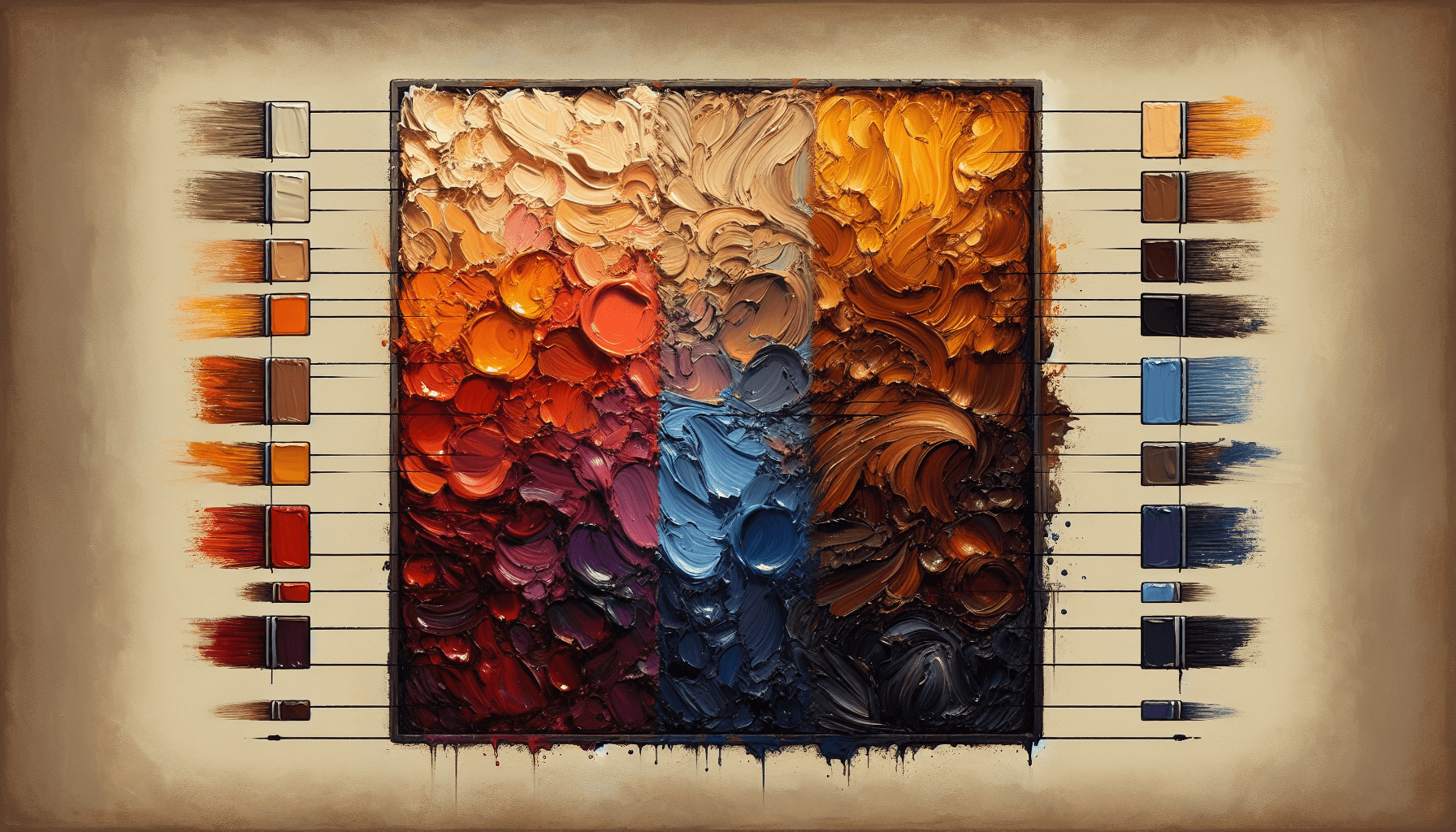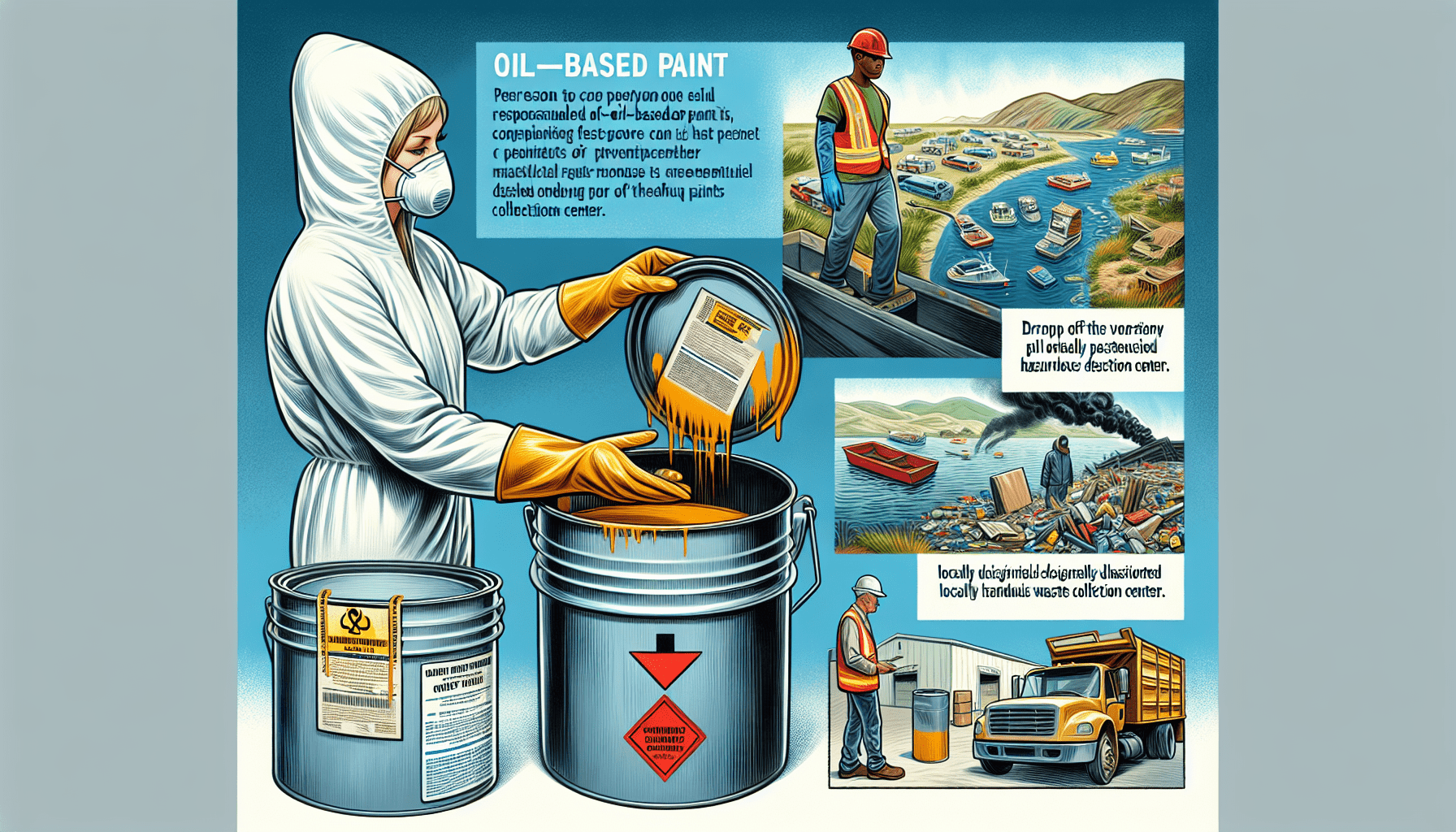Oil paints and tempera paints represent two distinct mediums that have defined and shaped the course of art history. In “How Do Oil Paints Differ From Tempera Paints,” you will explore these differences with meticulous attention to detail. The article delves into the varying composition, application techniques, drying times, and final appearances of each type of paint, providing a comprehensive understanding of how these attributes influence an artist’s choice and the resulting artwork. By examining the unique qualities of both oil and tempera paints, the article aims to enrich your appreciation for these enduring artistic tools. Have you ever wondered how oil paints differ from tempera paints? Whether you’re a seasoned artist or a beginner trying to determine which medium to use for your next masterpiece, understanding the nuances between these two types of paint can significantly impact your decision. In this article, we will delve deeply into the unique characteristics, historical contexts, compositions, application techniques, and even advantages and disadvantages of both oil and tempera paints.

Historical Context
Origins of Oil Paints
Oil paints have a rich history dating back to ancient times, although they became more prevalent during the European Renaissance. Renowned artists like Leonardo da Vinci and Rembrandt favored this medium for its versatility and longevity. The development of oil paint allowed for greater flexibility in technique, contributing to the flourishing of Western art.
Origins of Tempera Paints
Tempera painting dates back even further, with roots in early civilizations, including ancient Egypt and classical Greece. It reached its pinnacle during the Byzantine and early Renaissance periods. This medium was highly valued for its ability to produce detailed and vibrant works, making it a staple for illuminated manuscripts and religious iconography.
Composition
Ingredients in Oil Paints
Oil paints are composed of pigments suspended in a drying oil, typically linseed oil. This mixture allows for a rich, glossy finish and a depth of color that is challenging to achieve with other mediums.
| Ingredient | Function |
|---|---|
| Pigments | Provide color |
| Drying Oils | Act as a binder to create a smooth, durable surface |
| Solvents | Thin the paint for different application techniques |
| Additives | Enhance drying time, texture, and finish quality |
Ingredients in Tempera Paints
Tempera paints combine pigment with a water-soluble binder, often egg yolk. The result is a fast-drying, matte finish that can achieve fine detail and longevity, provided it is applied correctly.
| Ingredient | Function |
|---|---|
| Pigments | Provide color |
| Egg Yolk | Acts as a binder, giving the paint a smooth consistency |
| Water | Thins the paint and assists in application |
| Gum Arabic | May be included to enhance adhesion and viscosity |
Drying Time
Drying Time for Oil Paints
One of the most distinguishing factors of oil paints is their slow drying time. This allows artists to work with the paint over an extended period, blending and reworking the art as necessary.
Drying Time for Tempera Paints
In contrast, tempera paints dry quickly, often within minutes. While this fast drying time can be advantageous for layering and fine detailing, it can also be a limitation when extensive blending is required.
Techniques and Application
Techniques with Oil Paints
Oil paints are renowned for their versatility. You can employ a variety of techniques, including glazing, impasto, and scumbling. The ability to manipulate the paint over time allows for a range of textures and effects.
| Technique | Description |
|---|---|
| Glazing | Applying thin layers for luminous effects |
| Impasto | Applying thick layers for textured surfaces |
| Scumbling | Applying a thin, opaque top layer to modify underlying layers |
| Wet-on-Wet | Blending colors directly on the canvas |
Techniques with Tempera Paints
Tempera paints, on the other hand, excel in detail and precision. Artists often use a cross-hatching technique or apply thin layers to build up color and detail.
| Technique | Description |
|---|---|
| Cross-Hatching | Layering lines to build texture and depth |
| Glazing | Using thin layers, similar to oil paints, but quicker |
| Dry Brush | Using minimal paint for a textured, feathered effect |
| Sgraffito | Scratching through a layer to reveal underlying layers |

Surface and Durability
Oil Paint Durability
Oil paints are known for their durability. When applied to a suitable surface and properly sealed, oil paintings can last for centuries without significant degradation. They are generally applied to primed canvas or wood panels.
Tempera Paint Durability
Tempera paints are also durable but more sensitive to environmental changes. They are traditionally applied to wood panels treated with gesso, a preparation that provides a smooth and adhesive surface.
| Factor | Oil Paints | Tempera Paints |
|---|---|---|
| Surface | Primed Canvas, Wood Panels | Wood Panels with Gesso |
| Environmental | Stable, durable in varying conditions | Sensitive to moisture and temperature |
| Longevity | Can last centuries | Can last centuries, but require care |
Color and Finish
Oil Paint Color and Finish
Oil paints offer a rich, lustrous finish and unparalleled depth of color. The slow drying process allows for subtle variations and blending, making it ideal for realistic and expressive art.
Tempera Paint Color and Finish
Tempera paints provide a more matte finish with vibrant, opaque colors. While they lack the inherent depth of oil paints, they allow for precise and detailed work that maintains its color stability over time.
Advantages and Disadvantages
Advantages of Oil Paints
- Versatility: Suitable for various techniques and effects.
- Durability: Long-lasting with proper care.
- Richness of Color: Deep, vibrant hues.
Disadvantages of Oil Paints
- Slow Drying Time: Can be a drawback for some projects.
- Complex Cleanup: Requires solvents and specialized varnishes.
- Allergens: Some people might be sensitive to the chemicals used.
Advantages of Tempera Paints
- Quick Drying: Beneficial for fast-paced projects.
- Fine Detail: Excellent for precise and intricate work.
- Stable Over Time: Colors remain consistent.
Disadvantages of Tempera Paints
- Less Versatile: Limited in terms of blending and texture creation.
- Environmental Sensitivity: Requires careful preservation.
- Surface Limitation: Best suited for rigid surfaces like wood panels.
Choosing the Right Medium
Suitability for Projects
When deciding between oil and tempera paints, consider the specific needs of your project. If your work requires intricate detail and fine lines, tempera might be your best bet. For larger, more expressive works that benefit from blending and textural manipulation, oil paint is likely more suitable.
Personal Preferences
Your personal comfort and familiarity with each medium also play a significant role. If you prefer a methodical, layer-by-layer approach, tempera might be more aligned with your style. Conversely, if you enjoy a more flexible, iterative process, oil paints offer that freedom.
Conclusion
Understanding the differences between oil and tempera paints can significantly influence your artistic process and the final outcome of your work. Each medium has unique characteristics that can either complement or hinder your creative vision depending on the context.
In summary:
| Aspect | Oil Paints | Tempera Paints |
|---|---|---|
| Historical Origin | European Renaissance | Ancient Egypt, Byzantine Period |
| Composition | Pigments in drying oil | Pigments in egg yolk, water-soluble |
| Drying Time | Slow | Fast |
| Techniques | Versatile (blending, impasto) | Detailed (cross-hatching, glazing) |
| Surface Durability | Long-lasting with proper care | Sensitive to environmental changes |
| Color and Finish | Rich, lustrous | Matte, vibrant |
| Project Suitability | Large, expressive, blended | Detailed, precise, layered |
Ultimately, the choice between oil and tempera paints comes down to your specific needs and preferences as an artist. By understanding the distinct features of each medium, you can make an informed decision that enhances your creative practice.



